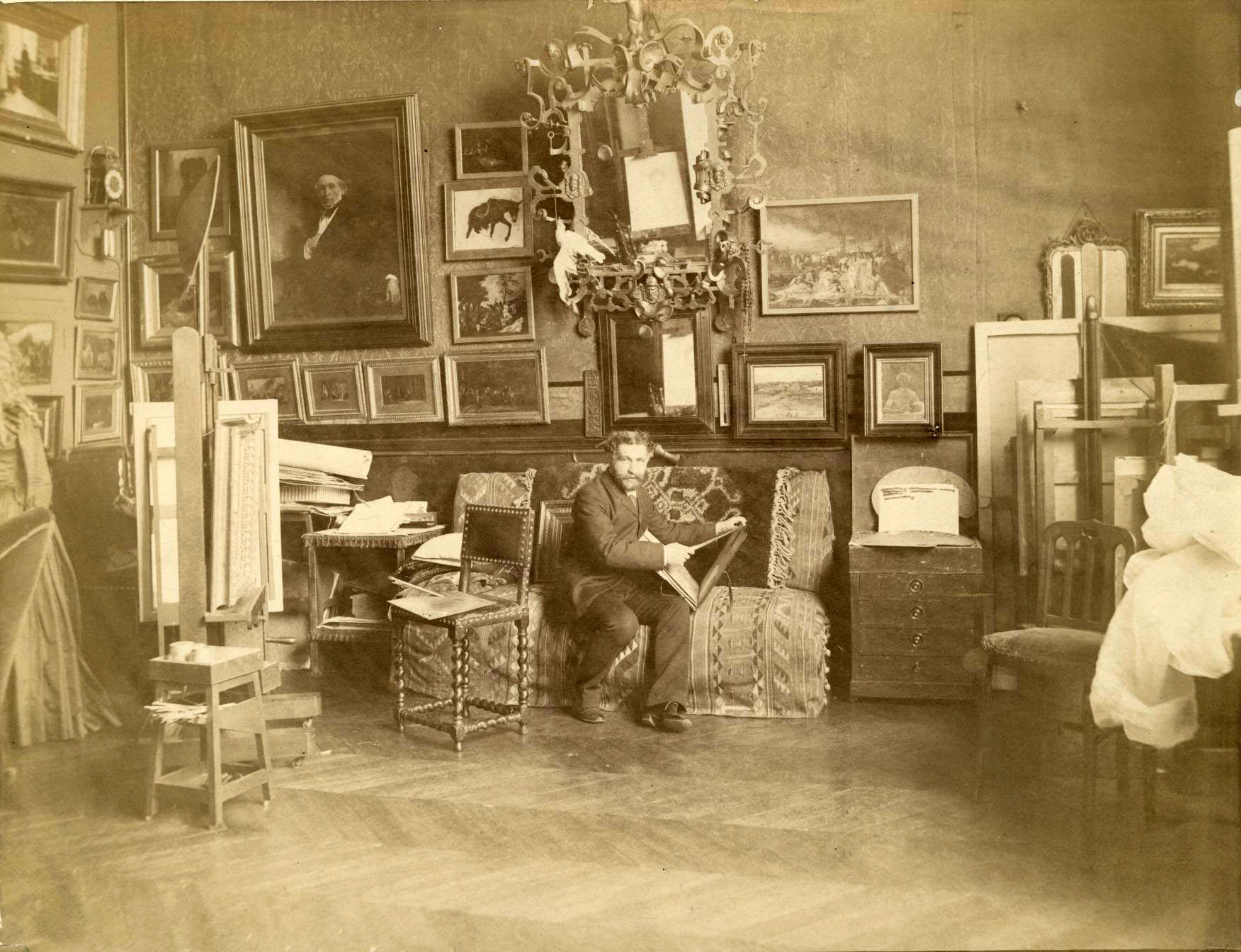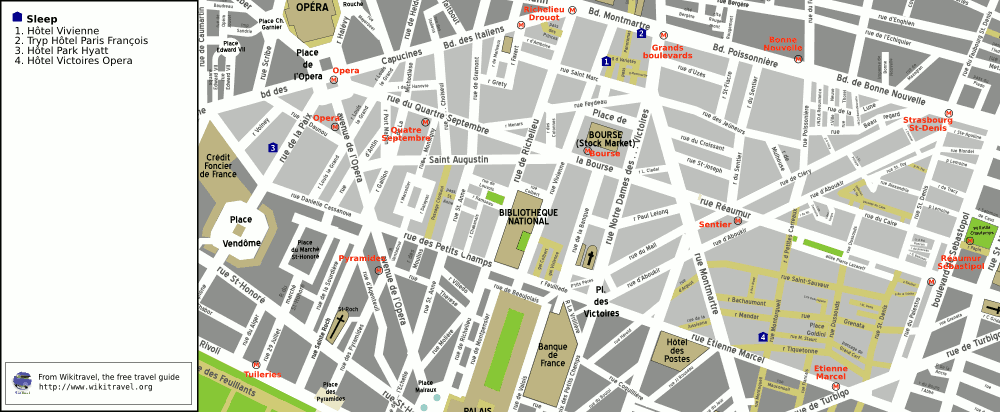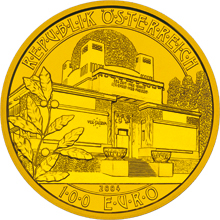|
Académie Julian
The () was a private art school for painting and sculpture founded in Paris, France, in 1867 by French painter and teacher Rodolphe Julian (1839–1907). The school was active from 1868 through 1968. It remained famous for the number and quality of artists who attended during a great period of effervescence in the arts in the early twentieth century. After 1968, it integrated with the École supérieure de design, d'art graphique et d'architecture intérieure (ESAG) Penninghen. History Rodolphe Julian established the Académie Julian in 1868 at the Passage des Panoramas, as a private studio school for art students.Tate Gallery"Académie Julian."/ref> The Académie Julian not only prepared students for the exams at the prestigious École des Beaux-Arts, but offered independent alternative education and training in arts. "Founded at a time when art was about to undergo a long series of crucial mutations, the Academie Julian played host to painters and sculptors of every kind ... [...More Info...] [...Related Items...] OR: [Wikipedia] [Google] [Baidu] |
Marie Bashkirtseff
Marie Bashkirtseff, born Maria Konstantinovna Bashkirtseva (; – 31 October 1884), was an émigré artist who was born into a noble family on their estate near the city of Poltava. She lived and worked in Paris, and died at the age of 25. Life and painting career Bashkirtseff was born in Gavrontsi (Havrontsi) near Poltava, Russian Empire (present-day Ukraine), to a wealthy noble family. Her father was a local Marshal of Nobility (Russia), marshal of nobility, Konstantin Pavlovich Bashkirtsev. Her mother Maria Stepanovna Babanina (1833—1920) also belonged to Russian nobles. Her parents separated when she was 12. As a result, she grew up mostly abroad, traveling with her mother throughout most of Europe, with longer spells in Germany and on the Riviera, until the family settled in Paris. Educated privately and with early musical talent, she lost her chance at a career as a singer when illness destroyed her voice. She then determined to become an artist, and she studied p ... [...More Info...] [...Related Items...] OR: [Wikipedia] [Google] [Baidu] |
Tony Robert-Fleury
Tony Robert-Fleury (1 September 18378 December 1911) was a French painter, known primarily for historical scenes. He was also a prominent art teacher, with many famous artists among his students. Biography He was born just outside Paris, and studied under his father Joseph-Nicolas Robert-Fleury and under Paul Delaroche and Léon Cogniet at the École des Beaux-Arts (School of Fine Arts) in Paris. His first painting at the Salon de Paris, in 1866, was a large historical canvas, titled ''Varsovie, Scène de l'Insurrection Polonaise'', recalling the events of 8 April 1861 in Warsaw, when Russian troops quenched riots by force. In the following year, his "Old Women in the Place Navone, Rome" was purchased by the Musée du Luxembourg. In 1870, he painted a canvas of ''Le Dernier Jour de Corinthe'' (''Last Day of Corinth''), which depicted the last day before the Roman legions looted and burned the ancient Greek city, according to Livy. This painting was also purchased by the Mus ... [...More Info...] [...Related Items...] OR: [Wikipedia] [Google] [Baidu] |
Amélie Beaury-Saurel
Amélie Beaury-Saurel (1849 – May 30, 1924) was a French painter noted for portraiture. Life and career Born in Barcelona as Amélie Beaury, she added "Saurel" to her name in recognition of her mother's family who could trace their lineage to the Byzantine emperors of the 11th century. Her family lived in Spain and Corsica, but eventually settled in France where she enrolled in the Academie Julian and paid for her studies by carrying out administrative duties and managing the finances. At various times, she was a pupil of Jules Joseph Lefebvre, J. Lefebvre, T. Robert-Fleury and J.P. Laurens in Académie Julian, and became a very popular portrait painter, thanks to Léon Bonnat. She married Rodolphe Julian in 1895 and took on charge a women's atelier. In her publications, Marie Bashkirtseff (also a Julian pupil) talked distrustfully about "l'espagnole" (''the Spanish woman''). She made her ''début'' in the ''Salon de Paris'' in 1874, where she was considered one of the mos ... [...More Info...] [...Related Items...] OR: [Wikipedia] [Google] [Baidu] |
2nd Arrondissement Of Paris
The 2nd arrondissement of Paris (''IIe arrondissement'') is one of the 20 arrondissements of the capital city of France. In spoken French, this arrondissement is colloquially referred to as ''deuxième'' (second/the second). It is governed locally together with the 1st, 3rd and 4th arrondissement, with which it forms the 1st sector of Paris. Also known as Bourse, this arrondissement is located on the right bank of the River Seine. The 2nd arrondissement, together with the adjacent 8th and 9th arrondissements, hosts an important business district, centred on the Paris Opéra, which houses the city's most dense concentration of business activities. The arrondissement contains the former Paris Bourse (stock exchange) and several banking headquarters, as well as a textile district, known as the Sentier, and the Opéra-Comique's theatre, the Salle Favart. The 2nd arrondissement is the home of Grand Rex, the largest movie theater in Paris. The 2nd arrondissement is also the home ... [...More Info...] [...Related Items...] OR: [Wikipedia] [Google] [Baidu] |
8th Arrondissement Of Paris
The 8th arrondissement of Paris (''VIIIe arrondissement'') is one of the 20 Arrondissements of Paris, arrondissements of the capital city of France. In spoken French, the arrondissement is colloquially referred to as ''le huitième'' (). The arrondissement, called Élysée, is situated on the Rive Droite, right bank of the Seine, River Seine and centered on the Champs-Élysées, Avenue des Champs-Élysées. The 8th arrondissement is, together with the 1st arrondissement of Paris, 1st, 9th arrondissement of Paris, 9th, 16th arrondissement of Paris, 16th and 17th arrondissement of Paris, 17th arrondissements, one of Paris' main business districts. According to the 1999 census, it was the place of employment of more people than any other single arrondissement of the capital. It is also the location of many places of interest, among them the Champs-Élysées, the Arc de Triomphe (partial) and the Place de la Concorde, as well as the Élysée Palace, the official residence and office ... [...More Info...] [...Related Items...] OR: [Wikipedia] [Google] [Baidu] |
Modern Art
Modern art includes artistic work produced during the period extending roughly from the 1860s to the 1970s, and denotes the styles and philosophies of the art produced during that era. The term is usually associated with art in which the traditions of the past have been thrown aside in a spirit of experimentation. Modern artists experimented with new ways of seeing and with fresh ideas about the nature of materials and functions of art. A tendency away from the narrative, which was characteristic of the traditional arts, toward abstraction is characteristic of much modern art. More recent artistic production is often called contemporary art or Postmodern art. Modern art begins with the post-impressionist painters like Vincent van Gogh, Paul Cézanne, Paul Gauguin, Georges Seurat and Henri de Toulouse-Lautrec. These artists were essential to modern art's development. At the beginning of the 20th century Henri Matisse and several other young artists including the Proto-Cubism, pre ... [...More Info...] [...Related Items...] OR: [Wikipedia] [Google] [Baidu] |
Avant-garde
In the arts and literature, the term ''avant-garde'' ( meaning or ) identifies an experimental genre or work of art, and the artist who created it, which usually is aesthetically innovative, whilst initially being ideologically unacceptable to the artistic establishment of the time. The military metaphor of an ''advance guard'' identifies the artists and writers whose innovations in style, form, and subject-matter challenge the artistic and aesthetic validity of the established forms of art and the literary traditions of their time; thus, the artists who created the anti-novel and Surrealism were ahead of their times. As a stratum of the intelligentsia of a society, avant-garde artists promote progressive and radical politics and advocate for societal reform with and through works of art. In the essay "The Artist, the Scientist, and the Industrialist" (1825), Benjamin Olinde Rodrigues's political usage of ''vanguard'' identified the moral obligation of artists to "ser ... [...More Info...] [...Related Items...] OR: [Wikipedia] [Google] [Baidu] |
Les Nabis
The Nabis (, ) were a group of young French artists active in Paris from 1888 until 1900, who played a large part in the transition from Impressionism and academic art to abstract art, symbolism and the other early movements of modernism. The members included Pierre Bonnard, Maurice Denis, Paul Ranson, Édouard Vuillard, Ker-Xavier Roussel, Félix Vallotton, Paul Sérusier and Auguste Cazalis. Most were students at the Académie Julian in Paris in the late 1880s. The artists shared a common admiration for Paul Gauguin and Paul Cézanne and a determination to renew the art of painting, but varied greatly in their individual styles. They believed that a work of art was not a depiction of nature, but a synthesis of metaphors and symbols created by the artist. In 1900, the artists held their final exhibition and went their separate ways.Bétard, Daphne, ''La révolution Nabie'', in ''Les Nabis et le décor'', Beaux-Arts Éditions, pp. 8-21 Etymology The Nabis took their name ... [...More Info...] [...Related Items...] OR: [Wikipedia] [Google] [Baidu] |
Vienna Secession
The Vienna Secession (; also known as the Union of Austrian Artists or ) is an art movement, closely related to Art Nouveau, that was formed in 1897 by a group of Austrian painters, graphic artists, sculptors and architects, including Josef Hoffman, Koloman Moser, Otto Wagner and Gustav Klimt. They resigned from the Association of Austrian Artists ( Vienna Künstlerhaus) in protest against its support for more traditional artistic styles. Their most influential architectural work was the Secession exhibitions hall designed by Joseph Maria Olbrich as a venue for expositions of the group. Their official magazine was called '' Ver Sacrum'' (''Sacred Spring'', in Latin), which published highly stylised and influential works of graphic art. In 1905 the group itself split, when some of the most prominent members, including Klimt, Wagner, and Hoffmann, resigned in a dispute over priorities, but it continued to function, and still functions today, from its headquarters in the ... [...More Info...] [...Related Items...] OR: [Wikipedia] [Google] [Baidu] |
Secession (art)
In art history, secession refers to a historic break between a group of avant-garde artists and conservative European standard-bearers of academic and official art in the late 19th and early 20th century. The name was first suggested by Georg Hirth (1841–1916), the editor and publisher of the influential German art magazine '' Jugend'' (''Youth)'', which also went on to lend its name to the ''Jugendstil''. His word choice emphasized the tumultuous rejection of legacy art while it was being reimagined. Of the various secessions, the Vienna Secession (1897) remains the most influential. Led by Gustav Klimt, who favored the ornate Art Nouveau style over the prevailing styles of the time, it was inspired by the Munich Secession (1892), and the nearly contemporaneous Berlin Secession (1898), all of which begot the term ''Sezessionstil'', or "Secession style." Hans-Ulrich Simon later revisited that idea in ''Sezessionismus: Kunstgewerbe in literarischer und bildender Kunst'', the t ... [...More Info...] [...Related Items...] OR: [Wikipedia] [Google] [Baidu] |
L'art Pompier
''L'art pompier'' (literally 'fireman art') or ''style pompier'' is a derisive late-19th century French term for large 'official' academic art paintings of the time, especially historical or allegorical ones. The term derives from the helmets with horse-hair tails, worn at the time by French firemen, which are similar to the Attic helmets often worn in such works by allegorical personifications, classical warriors, or Napoleonic cavalry. It also suggests half-puns in French with ''pompéien'' ('from Pompeii') and ''pompeux'' ('pompous'). This type of art was seen by those who used the term as the epitome of the values of the bourgeoisie, and as insincere and overblown. ''L'art pompier'' (a term supporters mostly avoid) has enjoyed something of a critical revival in the last twenty years, partly caused by the new Musée d'Orsay in Paris, where it is displayed on more equal terms with the Impressionists and Realist painters of the period.Harding, The ''Manifeste Pompier'' ('Fir ... [...More Info...] [...Related Items...] OR: [Wikipedia] [Google] [Baidu] |
Salon (Paris)
The Salon (), or rarely Paris Salon (French: ''Salon de Paris'' ), beginning in 1667 was the official art exhibition of the in Paris. Between 1748 and 1890 it was arguably the greatest annual or biennial art event in the Western world. At the Salon of 1761, thirty-three painters, nine sculptors, and eleven engravers contributed. Levey, Michael. (1993) ''Painting and sculpture in France 1700–1789''. New Haven: Yale University Press, p. 3. From 1881 onward, it was managed by the Société des Artistes Français. Origins In 1667, the royally sanctioned French institution of art patronage, the (a division of the Académie des beaux-arts), held its first semi-public art exhibit at the Salon Carré. The Salon's original focus was the display of the work of recent graduates of the École des Beaux-Arts, which was created by Cardinal Mazarin, chief minister of France, in 1648. Exhibition at the Salon de Paris was essential for any artist to achieve success in France for at l ... [...More Info...] [...Related Items...] OR: [Wikipedia] [Google] [Baidu] |








